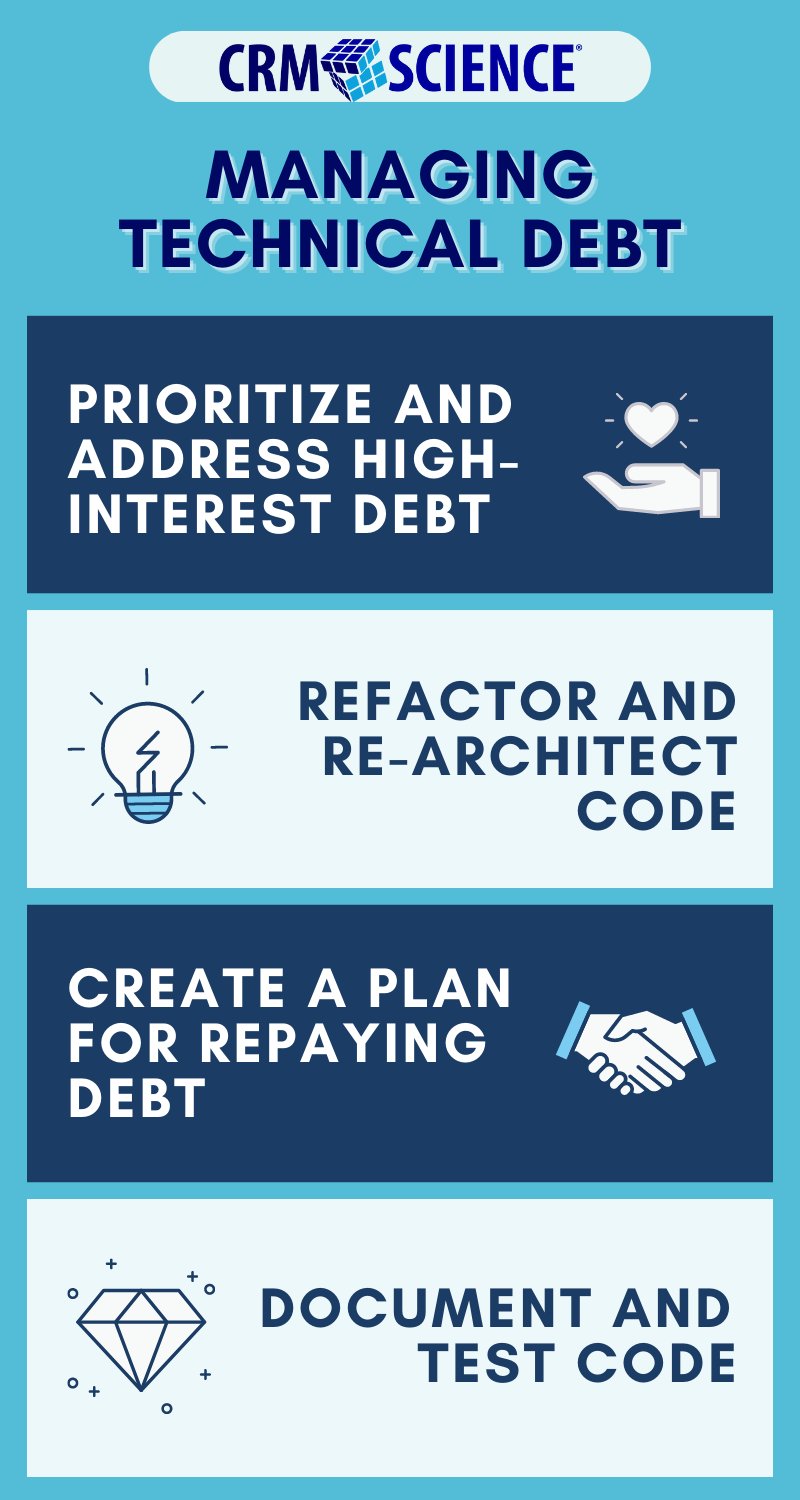Understanding Technical Debt: What it is and How to Manage it
- Charlene Steffke
- Apr 4, 2023
- 3 min read

As software development teams work to deliver new features and updates to their products, they may accumulate what is known as technical debt. Technical debt is a metaphor used to describe the cost of maintaining and enhancing software that has been developed in a hurry or without proper planning and design. It can result from taking shortcuts during development, using deprecated or poorly-designed code, or neglecting to document or test code properly.
What is Technical Debt?
Technical debt is the cost of maintaining and enhancing software developed quickly or without proper planning and design. It can be caused by a variety of factors, such as taking shortcuts during development, using deprecated or poorly-designed code, or neglecting to document or test code properly. As technical debt accumulates, it can make it more difficult and costly to add new features, fix bugs, or make other changes to the software.
Managing Technical Debt
Managing technical debt is crucial for the long-term health and maintenance of software. Here are a few strategies for managing technical debt:

Prioritize and Address High-Interest Debt
Identify areas of the codebase that are causing the most problems and address them first. These areas are likely to have the highest interest rates and the most negative impact on the overall health of the codebase.
Refactor and Re-architect Code
Refactoring is the process of reorganizing code to make it more maintainable and understandable. This can reduce the overall technical debt and make it easier to add new features and fix bugs.
Create a Plan for Repaying Debt
Create a plan for addressing technical debt, including a budget for refactoring and re-architecting code. This plan should be regularly reviewed and updated to ensure that technical debt is being effectively managed.
Document and Test Code
Writing clear and accurate documentation and thoroughly testing code can help prevent the accumulation of technical debt by catching potential problems early on.
What are the benefits of technical debt?
One of the main benefits is that it allows teams to deliver new features and updates to their products quickly. By taking shortcuts or neglecting certain best practices during development, teams can work faster and provide new features more quickly. This can be especially valuable in fast-paced and competitive industries, where time-to-market is a critical factor.
Another benefit is that technical debt can be used strategically. For example, a team may take on a certain amount of technical debt to deliver a new feature that is expected to generate significant revenue or provide other business benefits. In this case, the team would weigh the potential benefits against the costs of the technical debt and make a strategic decision to move forward with the feature.
Additionally, in some cases, taking on technical debt can be a way to experiment and learn. By making a quick and dirty solution, teams can quickly test out a new feature or design and make more informed decisions about pursuing it further.
However, it is essential to note that while there can be benefits to taking on technical debt, it's important to be strategic and mindful of the costs and risks. Technical debt can quickly accumulate and become a major obstacle to the long-term health and maintainability of the software. Therefore, it's crucial to have a plan for managing and repaying technical debt so that teams can take advantage of the benefits without getting overwhelmed by the costs.
Conclusion
Technical debt is inevitable in software development, but it can be effectively managed with the right strategies. By prioritizing and addressing high-interest debt, refactoring and re-architecting code, creating a plan for repaying debt, and properly documenting and testing code, teams can keep their technical debt under control and ensure the long-term health and maintenance of their software.





D365 Business Central Pricing fits the needs of Small and Midsize Businesses with core business needs. It helps organizations connect their financials, sales, service, and operations. For organizations of any size that have more sophisticated needs, business central offers a variety of applications including Marketing, Sales, Service, Finance, Operations, and Talent. As we know Dynamics 365 Business Central is sold and implemented through a global network of Dynamics 365 partners with industry expertise. Therefore, connect with a partner to request a demo and further evaluate the solution capabilities and 365 business central pricing .